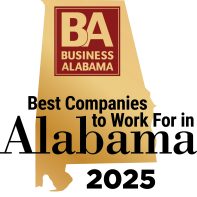Commonly used words in the compressed air world
- Compressor – machines designed from compressing air or gas from an initial intake pressure to a higher discharge pressure
- Vacuum Pumps – machines for compressing air or gas from an initial pressure which is below atmospheric to a final pressure which is near atmospheric
- Intercoolers – devices for removing the heat of compression of the air or gas between consecutive stages of multistage compressors
- Aftercoolers – devices for removing the heat of compression of the air or gas after compression is completed. They are one of the most effective means of removing moisture from compressed air
- Load Factor – ratio of the average compressor output during period of actual use to the continuous rated output of the machine
- Absolute Pressure – gauge pressure plus atmospheric pressure. At sea level the gauge pressure in pounds per square inch (psi) plus 14.7 gives the absolute pressure in pounds per square inch (psia)
- Low Pressure – Orifice Test is a method of accurately measuring the air delivered by a compressor. It is in the method recognized by ASME, ANSI (International Standards).
- Unload (No Load) – Air compressor continues to run (usually at FULL RPM), but NO air is delivered because intake is either “closed off” or “modified”, NOT allowing inlet air to be trapped
- “Modulating” Unload – air compressor continues to run and air supply is matched to demand by “partial unloading”. This is usually accomplished by a “regulator controlled floating inlet”.
- Start-Stop Control: Air supply is matched to demand by actual starting and stopping of the unit
- Cut-in/Cut-off Pressure – The settings on a pressure switch used to either “load or unload” the air compressor on “constant speed” application. The “cut-out” pressure is also referred to as “maximum pressure”, the point at which there is NO AIR DELIVERED. The “cut-in” pressure is also referred as “minimum pressure” – the pressure that the system is allowed to fall to before additional air volume is called for. The compressor runs at full load between cut-in and cut-out.
- Variable Displacement Controls: Also called “Rotor Length Adjustment” in oil cooled Rotary Screw controls. Particularly efficient in holding constant speed from 60% to 100% capacity variable speed control. Below this usually goes to “blow down” and idle.
- Rated Pressure: The operating pressure at which the air compressor’s performance (CFM and BHP – Horsepower required) is measured
- Specific Power: Used to compare air compressor efficiency unless otherwise stated. Usually in form of BHP/100 ACFM or CFM/HP

